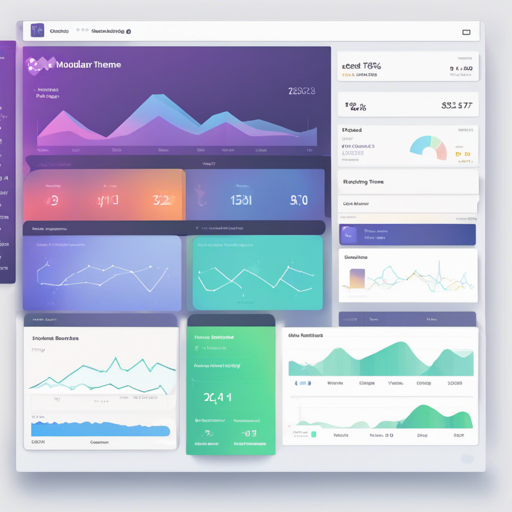Welcome to the world of ModularAdmin, a robust open-source dashboard theme that empowers you to create scalable and easily maintainable web applications. In this guide, we’ll walk through the steps you need to follow to get your ModularAdmin up and running, along with some tips and tricks for troubleshooting common issues.
Getting Started with ModularAdmin
- Download or Clone the Repository
You can either download the ZIP file or clone the repository with the following command:
git clone https://github.com/modularcode/modular-admin-html.git - Build the Project
Once you have the project files, you need to build the project as the repository doesn’t contain a prebuilt version. Here’s how you can do it:
- Ensure you have NodeJs (version 8+) and npm (version 3+) installed.
- Navigate into the project directory and run:
npm install - Then, build the project and start your local web server by executing:
npm startNow, open your browser and go to http://localhost:4000 to see your dashboard in action!
Understanding the Project Structure
Think of the ModularAdmin project structure as a beautifully organized library. Each folder serves a distinct purpose that helps you swiftly find what you need without rummaging through a chaotic mess.
- build: This houses various tasks related to application compilation, almost like the tool shed for a librarian.
- config: Contains configurations and paths, akin to a directory that guides you to different sections of the library.
- src: Here’s where the magic happens! It’s the source files folder, reminiscent of the main reading room where all the study takes place.
- dist: This is the compiled state of your app. Consider it the checkout section where you take home the best-sellers after they’ve been carefully compiled and finalized.
File Types Explained
Each file type in ModularAdmin carries specific purposes:
- Styles (*.scss): Stylesheets written in SASS are compiled into CSS for a polished look.
- Scripts (*.js): JavaScript files are organized by components for efficient management.
- Templates (*.hbs): Handlebars templates craft the HTML structure, allowing for reusable components.
Troubleshooting Your Setup
If you run into issues building or running your project, consider these troubleshooting tips:
- Ensure you have the correct versions of NodeJs and npm installed, as discrepancies here can cause issues.
- Double-check your project’s folder structure; make sure you haven’t moved any critical files.
- If you encounter errors with dependencies, try running
npm installagain. - For running the project in Docker, make sure Docker is installed and running properly before executing
docker-compose build.
For more insights, updates, or to collaborate on AI development projects, stay connected with fxis.ai.
Conclusion
With ModularAdmin, building dashboards has never been easier. Whether you are a seasoned developer or a beginner, following this guide will surely help you on your journey. Don’t forget, at fxis.ai, we believe that such advancements are crucial for the future of AI, as they enable more comprehensive and effective solutions. Our team is continually exploring new methodologies to push the envelope in artificial intelligence, ensuring that our clients benefit from the latest technological innovations.

